Our Nordic cousins on the Faroe Islands have a unique culture. Learn more about the Faroe Islands with these fascinating facts.
Continuing our exploration of the Nordic countries, we now turn our attention to the wild and wonderful Faroe Islands.
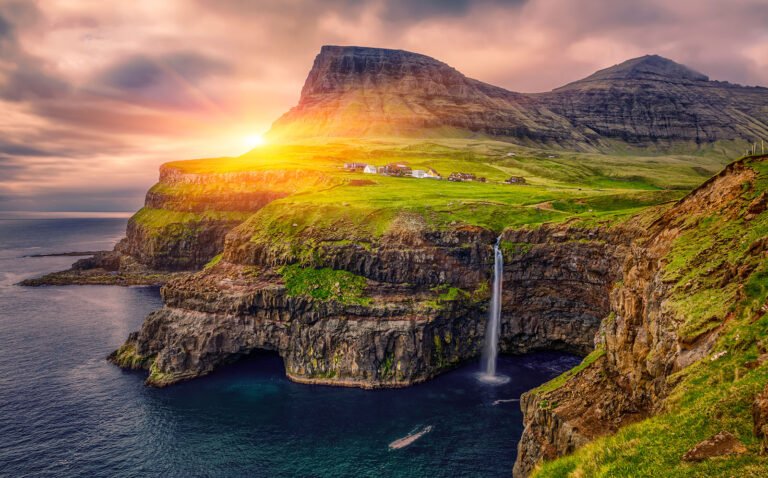
The Faroe Islands lie about halfway between Scotland and Iceland in the North Atlantic. An archipelago of hundreds of islets and skerries, the rugged, rocky Faroes are best known for their bird cliffs and unspoiled landscape.
But there's so much more to know about this archipelago besides its landscape and wildlife. From the wonderful wildlife to the famous movie settings, here are ten fascinating facts about the Faroe Islands.
1. There are 18 main islands
Defining an archipelago can often be complex. The Faroe Islands comprise over 750 islands, islets, and skerries, yet it is the 18 main islands that truly encapsulate the spirit of the nation. Of these, only one remains uninhabited.
Streymoy, not only the largest island, is also the most populated and hosts the capital, Tórshavn.
Following closely in size and population is Eysturoy, where more than 10,000 residents enjoy a vibrant mix of modernity and tradition, set against a backdrop of stunning natural beauty.
These islands form a tight-knit community that maintains a strong sense of identity and autonomy, making them an intriguing subject for anyone interested in the cultural and social dynamics of isolated regions.
2. The islands are an autonomous territory of Denmark
Or more specifically, the islands form a self-governing overseas administrative division of the Kingdom of Denmark, in much the same way as Greenland.
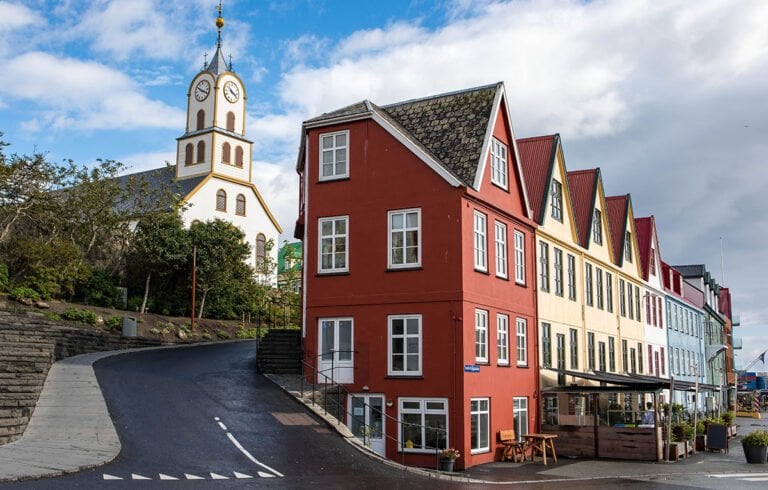
For hundreds of years the Faroe Islands were part of Norway, until the 1814 Treaty of Kiel transferred them to Denmark.
Self-governing since 1948, the islands have their own parliament and control most areas of lawmaking aside from defense, policing and foreign affairs.
While Danish is also taught in schools, Faroese is the national language and bears closer resemblance to Icelandic and Old Norse than Danish does. The Danish krona is the official currency although local banknotes are issued.
3. There are more sheep than people
There are approximately 70,000 sheep living on the islands. The last official human population estimate of the Faroe Islands was just 53,358. That's roughly half the population of Inglewood, California.
Believed to have been introduced around the 9th century, Faroese sheep are a unique breed of hardy sheep that roam year-round in the meadows and mountains of the islands.
Some Scottish sheep (and now cross-breeds) also live on the islands, having been introduced in the 19th century. Researchers have found sheep DNA in lake-bed sediments dating back more than 1,500 years.
4. You’re never far from the sea
In the Faroe Islands, the sea is a constant presence that shapes daily life and culture. All major towns and villages, hosting populations ranging from a few hundred to several thousand, are situated along the coast.
Remarkably, no point on any of the islands is more than three miles from the ocean. This proximity means that the sounds of waves and the scent of salt air are ever-present, blending seamlessly into the fabric of Faroese life.
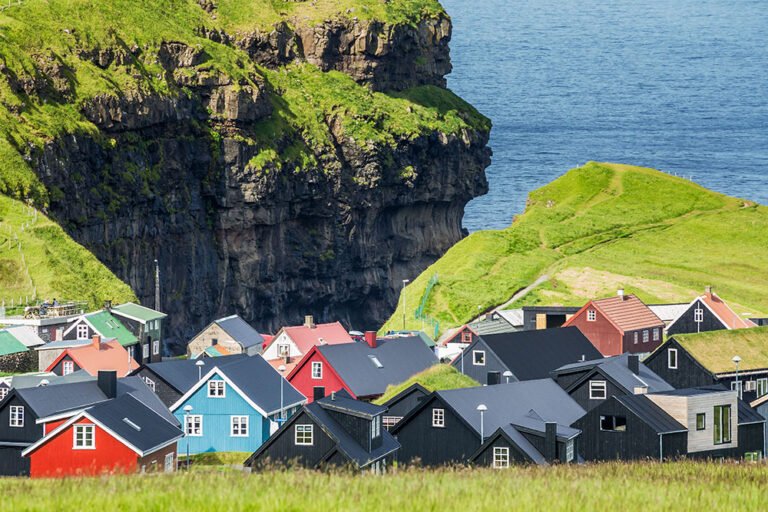
The sea not only provides a livelihood for many through fishing and aquaculture but also plays a central role in local recreation and tourism, offering numerous opportunities for sailing, fishing, and oceanic exploration.
5. Scenes from James Bond were filmed here
In a recent article about movie locations in Norway we mentioned several places used in the most recent James Bond movie, No Time to Die. Our friends from the Faroe Islands also featured, in spectacular fashion.
Spoiler alert! Kalsoy island was the setting for Safin’s island in the third act of the movie. The visually striking coastline became the location for one of the most memorable ever moments in any James Bond movie.
The climax of No Time to Die is notable as it marks the first instance in the James Bond series where the character does not return home. This scene, set against the stunning natural backdrop of Kalsoy in the Faroe Islands, holds special significance for the locals.
In tribute, villagers have erected a tombstone for the iconic spy, mirroring the design of Bond’s parents’ tombstone from Skyfall.
The stone is engraved with the poignant quote read by M at the film’s close, “The proper function of man is to live, not to exist,” which is originally by Jack London and was referenced by Ian Fleming in You Only Live Twice.
6. The Faroe Islands said no to tourists
In 2019, the Faroe Islands tourist board decided the islands needed a break from tourism. Many tourists attractions were closed, and locals and visitors were instead invited to help maintain hiking trails and other important infrastructure.
This was of course before the global health crisis of 2020-22. These days, I would expect most hotels, restaurants and other tourist attractions want a very different kind of campaign!
7. Buses are free to use in the capital
The eight bus routes in and around Torshavn municipality are free to use. However, you may not need them. Just 20,000 people live in the municipality and so the town's sights are mostly within comfortable walking distance.
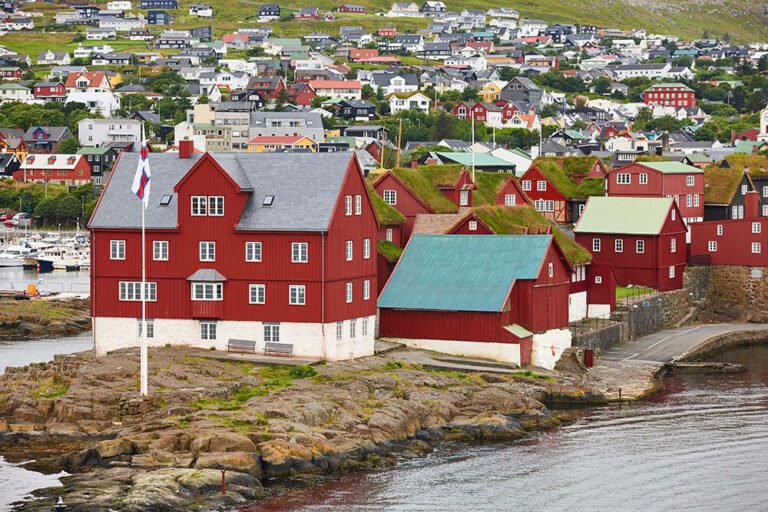
Travel elsewhere in the islands is relatively inexpensive thanks to heavy government subsidies especially on the ferries that provide an essential link between the island communities.
8. There are only a handful of traffic lights
Are you sick of red lights in rush-hour traffic? A Faroe Islands road trip could be the answer. Just nine sets of traffic lights exist on the islands, eight of which are in and around the compact capital, Torshavn.
Many of these are new, explains Høgni Reistrup from Guide to Faroe Islands: “Since the new Glasir collage designed by the renowned architect Bjarke Ingels opened in 2018, the municipality has doubled the number of traffic lights on the roads that lead to the new college.”
However, that doesn't mean that driving is always easy. Many roads outside Torshavn are extremely narrow, so you'll need to be constantly on the lookout for oncoming traffic and passing points.
Another fun fact for drivers: The Faroe Islands is home to the world's first underwater traffic circle.
9. The Faroe Islands has a national airline
It’s a common myth that the only way to get to the islands is from Denmark. While Atlantic Airways’ daily direct flights from Copenhagen are the most common route, flights are also available from several other European destinations.
At the present time, Atlantic Airways is the only airline serving the islands year-round, with the exception of one route from Bergen, Norway, operated by Widerøe.
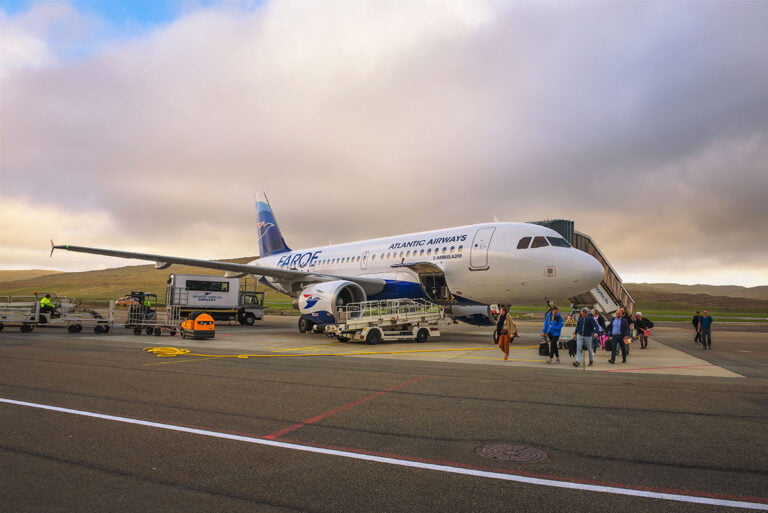
Scandinavian Airlines (SAS) also flew a regular route from Copenhagen prior to the pandemic, but at present the route is not operational during the winter.
The Faroe Islands can also be reached on the Smyril Line ferry that runs a year-round service between Iceland and Denmark. However, the crossing to the Faroe Islands takes 30 or 38 hours from Hirtshals, Denmark, depending on the season.
10. Whaling continues despite international criticism
Despite the wonderful landscapes and relaxed way of life, the Faroe Islands is perhaps best known internationally for its whaling operations.
The Faroe Islands government states that “it is considered both economic and environmental good sense to make the most of natural resources which are locally available.”
Dating back to the 9th century, the practice is now heavily regulated by the government and done under police supervision.
Despite such changes, photographs of the annual capture of hundreds of whales and dolphins causes global outrage.
Times may be changing, however. The most recent hunt in September 2021 led to an unexpectedly large catch, an event that even shocked some participants.
Have you ever been to the Faroe Islands? What's your favourite fact about this remote archipelago? Let us know down in the comments.

